So you’ve got your hands on a bison steak and want to know the best way to cook it? In this recipe, you’ll learn how to cook bison on the stovetop. Because bison steak is typically leaner than regular beef, it is important to cook it properly so that you can enjoy a tender, flavorful steak!
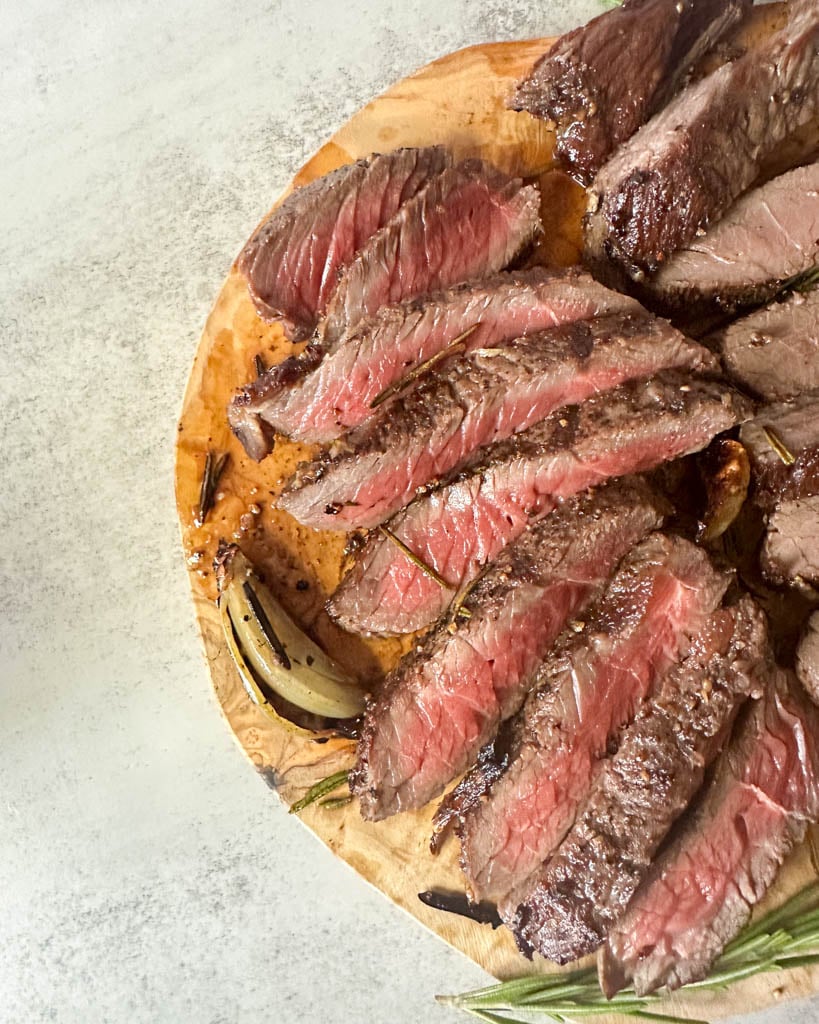
Bison is my favorite type of meat, and for good reason. It is a more sustainable option and bison are typically raised without the use of hormones or antibiotics, making it a solid choice. My bison meatballs recipe or bison burger are my typical go-to, but every so often I like to get fancy and enjoy a bison steak.
If we are comparing bison versus steak, each offers unique benefits, but when it comes to nutrient profile bison wins overall! It is low in calories, high in B vitamins, iron, zinc, and provides about 17 grams of protein per 4-ounce serving!

Some of the downsides when it comes to bison can be its price point, which is higher than typical beef, and it can sometimes be hard to find. So, if you happen to get your hands on a bison steak, let’s make sure you cook it properly so you can fully enjoy it!
Tips For Cooking The Best Bison Steak
- To enhance both tenderness and flavor, generously season your steak with salt and pepper at least 1 hour before cooking, or up to two days in advance. I prefer to season my steak two days ahead and store it in the fridge in an airtight container until it’s time to cook.
- Let the steak come to room temperature for at least 60 minutes before cooking to ensure even cooking –DO NOT SKIP THIS STEP.
- DO NOT cook past medium-well. Bison is a leaner cut of meat and tastes best when cooked to medium-rare. Otherwise, the steak can become tough and unenjoyable. Because bison is so lean it can be easy to overcook, so be mindful of your cooking time.
- Oil + Butter. I like to cook my steak in oil to start, then add butter halfway through the cooking process. This helps prevent the butter from burning. If the butter burns, it will produce a burnt, bitter taste that can affect your steak.
- Instant Thermometer. If you are going to buy this pricey cut of meat, make sure to have all the tools you need to cook it. An instant thermometer is essential so that you can properly measure the temperature and avoid overcooking your bison steak.
- Use a cast iron if you have one. You can also use a griddle or cook your steak on the grill. If you decide to cook your steak on the grill, melt the butter with garlic and herbs in a small saucepan first and use it to baste your steak while cooking.
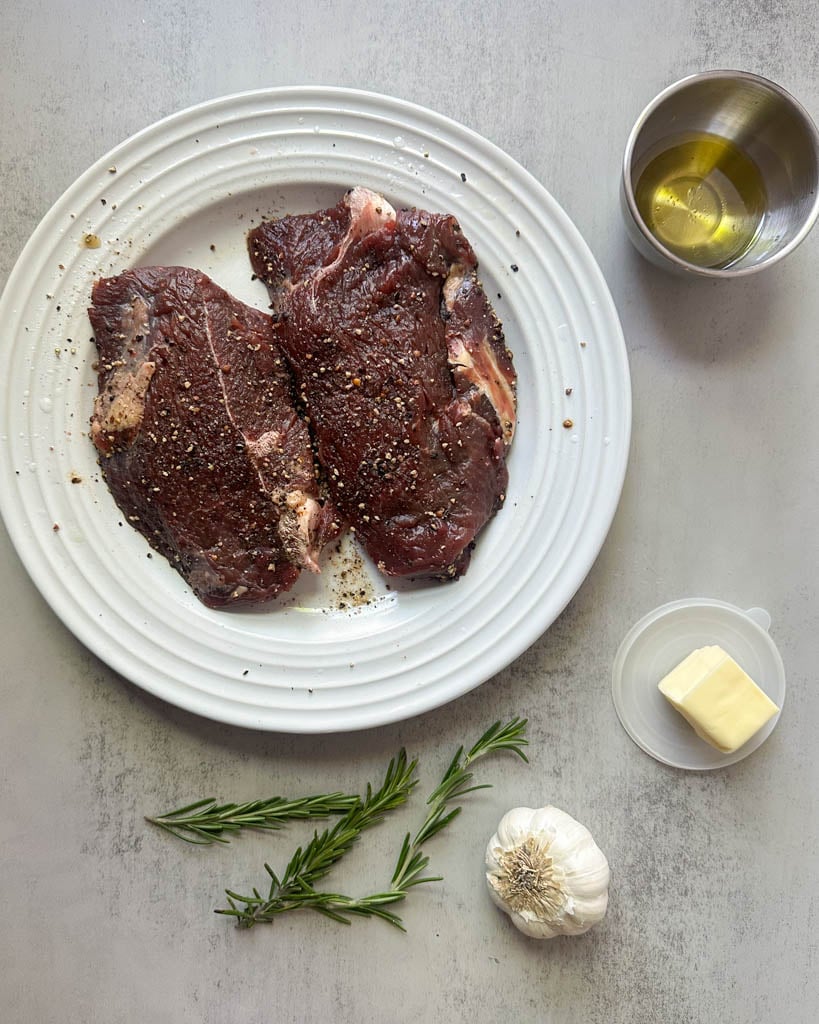
Ingredients
- Bison Steak: Grass-fed and finished bison steak is the best. You can use any cut you prefer, but you will typically find bison sirloin or ribeye cut in the grocery store.
- Salt and Pepper: Because bison is so high quality you do not need to use a bunch of seasonings or marinades. Salt and pepper are best to naturally enhance the flavor of the bison and help tenderize the meat. (Unless you are cooking flank or skirt steak. These cuts do well when marinated)
- Butter and Oil: Make sure to use high-quality butter because this really adds to the richness of the flavor. I like to use avocado oil because it can tolerate high heat without burning.
- Fresh Herbs and Fresh Garlic: Fresh is best, especially when it comes to the overall flavor of the steak. You will need a couple of cloves of garlic and a few sprigs of rosemary or thyme.
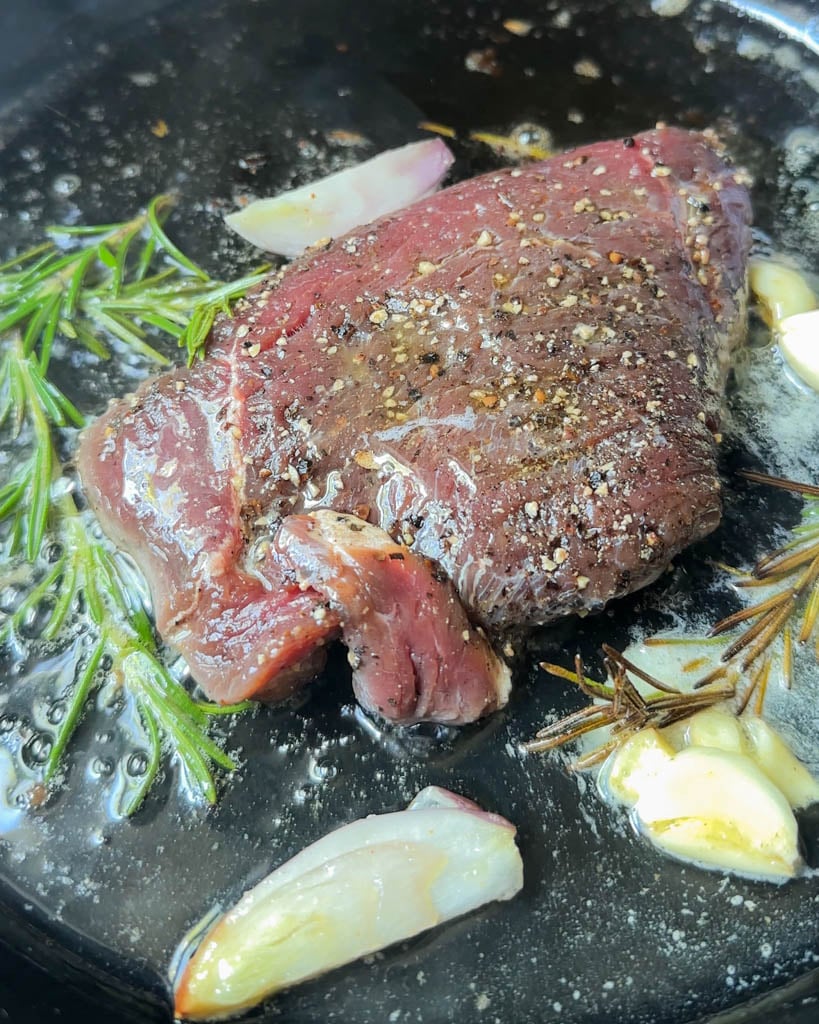
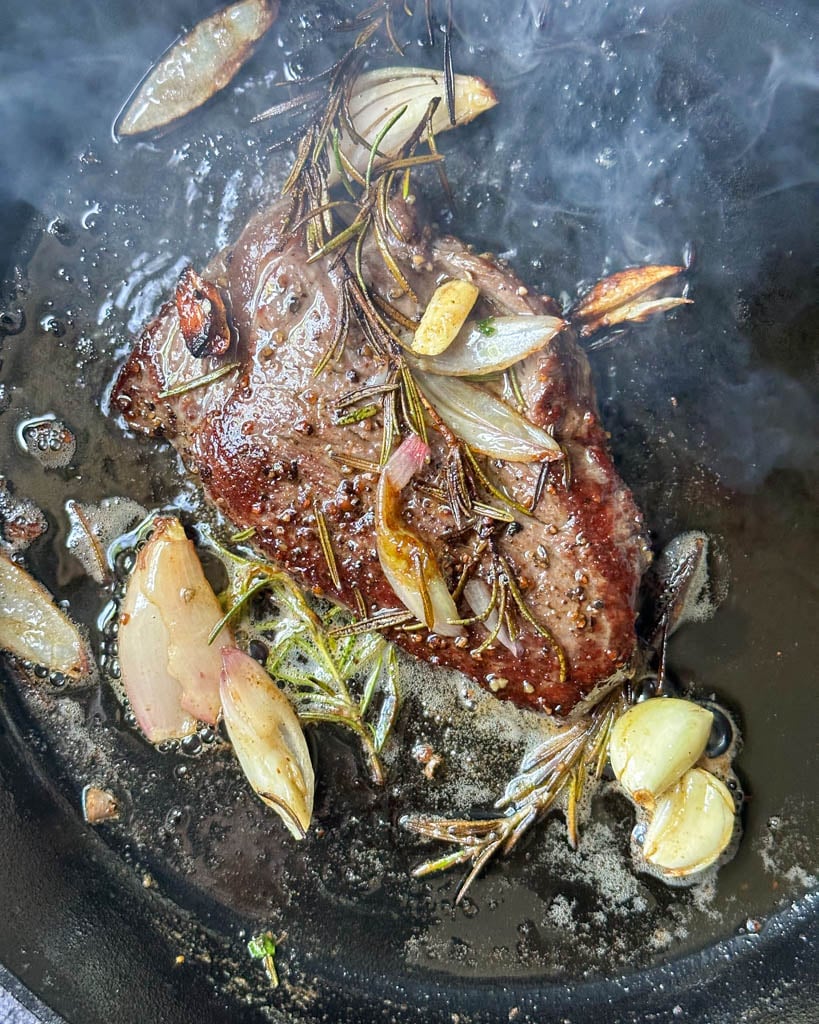
How To Cook Bison Steak On The Stovetop (Pan-Seared Bison Steak)
- Season your steak generously with salt and pepper on both sides. Do this at least 1 hour before cooking as you let the steak come to room temperature. For the best results, I recommend salting your bison steak up to three days prior and store your steak in an airtight container in the fridge. (Before cooking the steaks, let them come to room temperature for at least an hour.)
- In a cast iron skillet or heavy-bottomed pan, heat the oil over high heat. Place the steak into the pan and Allow them to sear for about 2-4 minutes (depending on size and thickness of your steaks). Halfway through, add the butter, garlic cloves, and fresh herbs. Baste the steak with the garlic herb butter before flipping.
- Using tongs, flip the steak and sear for another 2 minutes, or until the steak reaches your desired doneness, basting with the garlic butter as it cooks.
- For 1” thick steak: cook for about 3 minutes on the first side and 2 minutes on the second side for medium rare.
- For thicker cuts: Extend cooking time by 1 minute per half inch per side for a medium-rare doneness.
- Use an instant thermometer to check the temperature. Cook to 120°F (49°C) for medium rare, or 125° (52°C) for medium. Remove the steak from the pan and allow it to rest for 8-10 minutes before slicing. Enjoy!
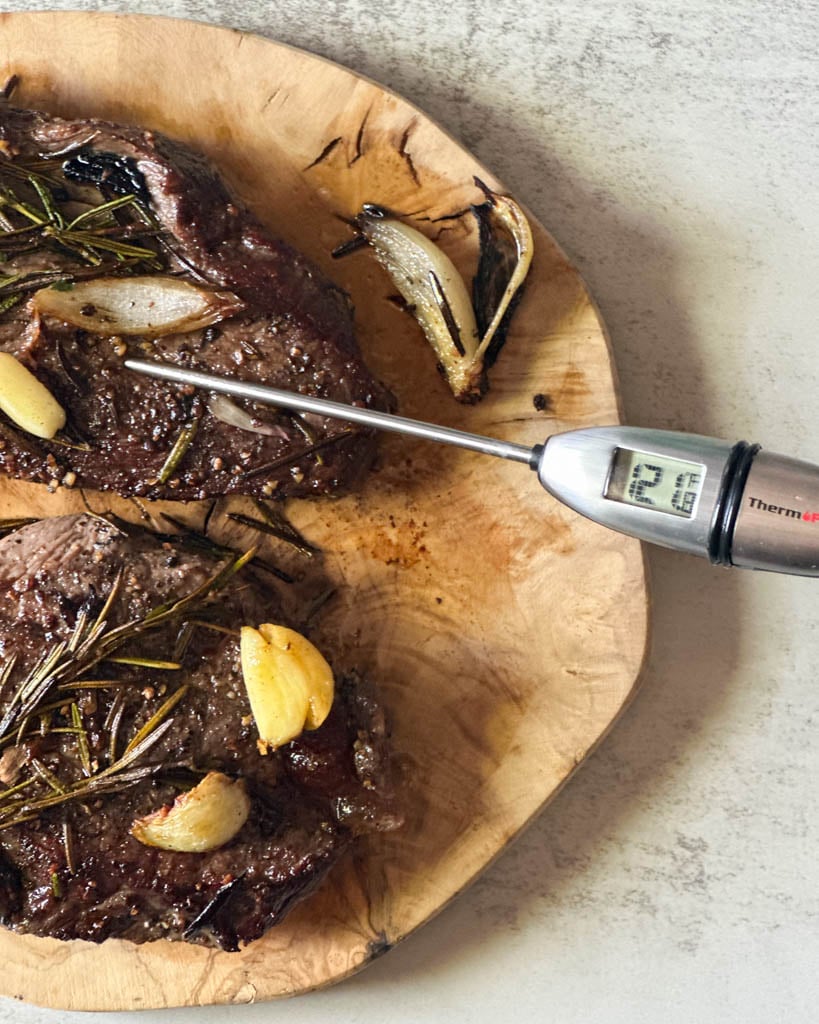
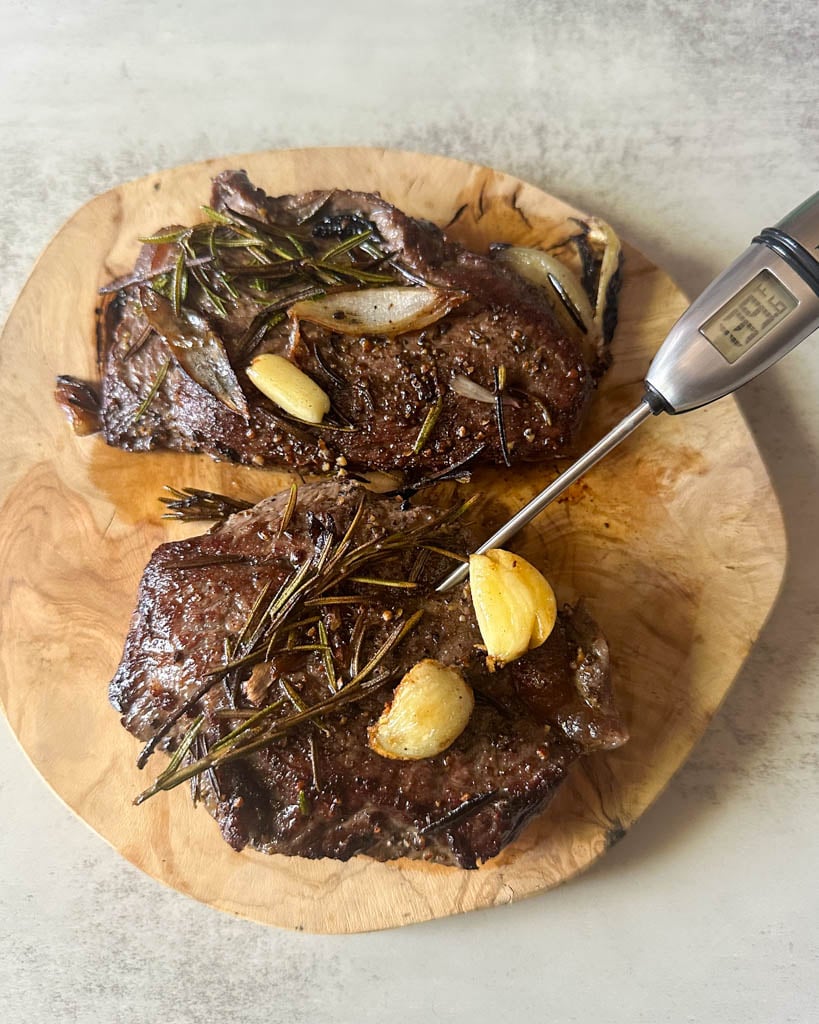
What temperature do you cook bison steaks to?
Internal Temperature Before Resting:
- Rare: 115°F (46°C)
- Medium-Rare: 120°F (49°C)
- Medium: 125°F (52°C)
- Medium Well: 135 to 145°F (57°C to 63°C)
Allow your bison steak to rest for 8-10 minutes before slicing
Bison is leaner than conventional beef, which means it cooks more quickly. Therefore, it’s recommended to cook bison steaks to no more than medium doneness to preserve their juiciness and tenderness. Typically, bison steaks require approximately one-third less cooking time compared to beef steaks.
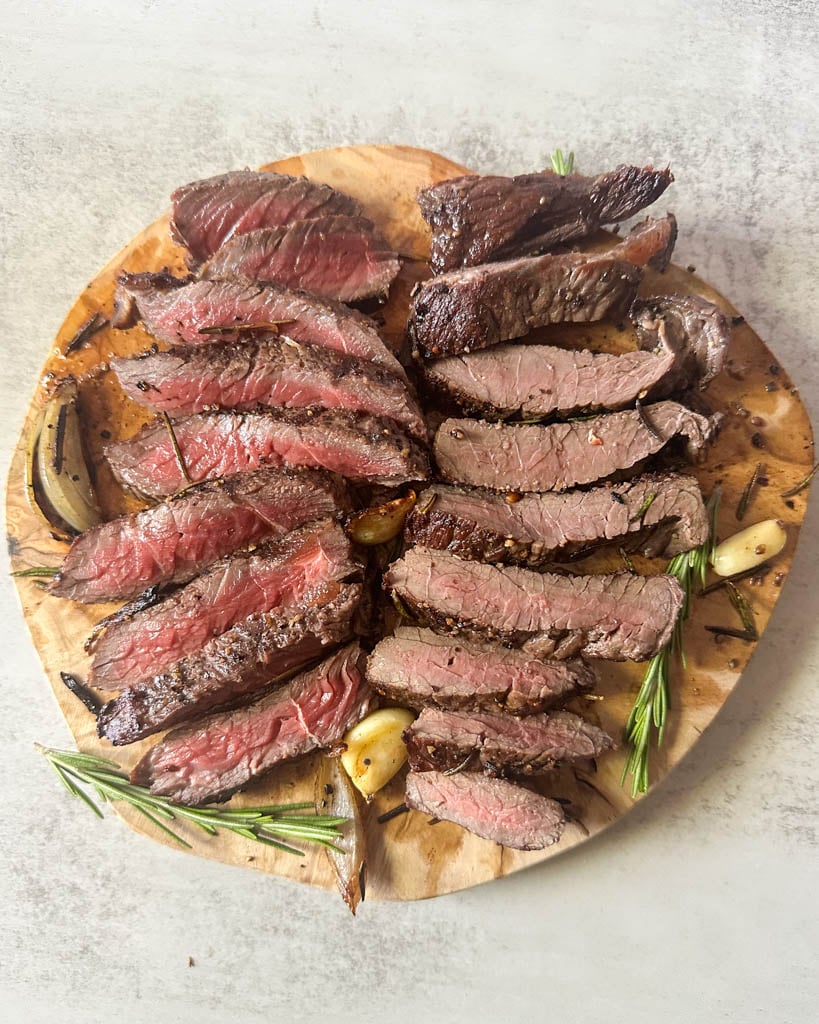
Common Questions
What does bison taste like?
Bison has a taste that’s often described as slightly sweeter and more robust than beef, with a hint of richness that sets it apart. Picture this: a delicious blend of earthy and savory flavors, coupled with a tender texture that practically melts in your mouth.
What types of bison steaks are available?
You can find virtually any cuts of steak available with beef also available with bison. For this recipe, I used sirloin. Below is a quick breakdown of the most popular cuts:
- Ribeye: This is a slightly marbled, flavorful cut from the rib area of the bison. It’s known for its tenderness and rich flavor.
- Strip Steak (New York Strip): This is a leaner cut with a fine texture and bold flavor. It comes from the loin area and is often prized for its tenderness.
- Tenderloin (Filet Mignon): This is the most tender and leanest cut of bison steak, coming from the loin area. It has a mild flavor and buttery texture.
- Sirloin: This is a versatile cut that’s lean and tender. It’s best cooked to medium-rare or medium to maintain its tenderness.
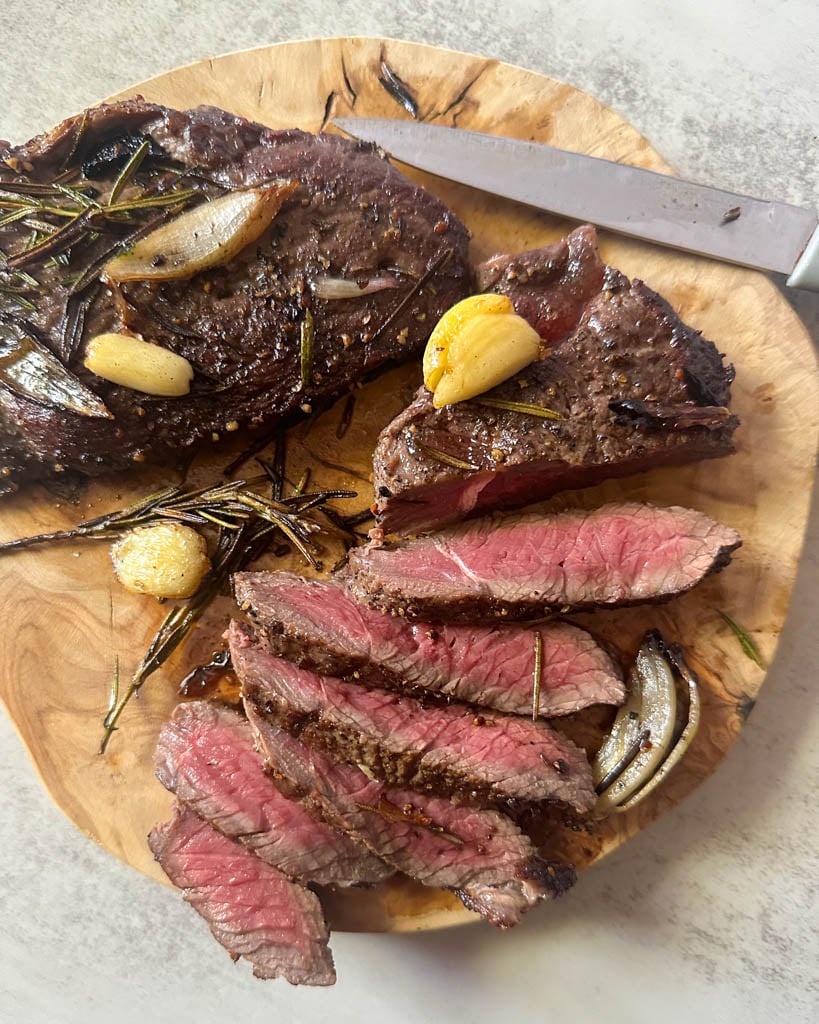
How should bison steak be cooked?
Pan-cooked bison (or bison cooked on the stovetop) is the easiest way to make bison steak. Grilling is also a wonderful option, especially in the summertime. You can reverse-sear your bison, just be mindful of the temperature so that you do not overcook your bison.

I topped my bison with red chimichurri sauce. Of course, you can purchase store-bought sauce, but I like to make mine from scratch. To save time, but premade roasted red peppers, which can usually be found in jars near items like olives in the grocery store.
To make red chimichurri you start by roasting the red pepper in the oven and when it is done, remove the skin. Then, add the red pepper (without the skin or seeds) to a food processor or blender along with the other ingredients and pulse until you reach your desired texture. That’s it!
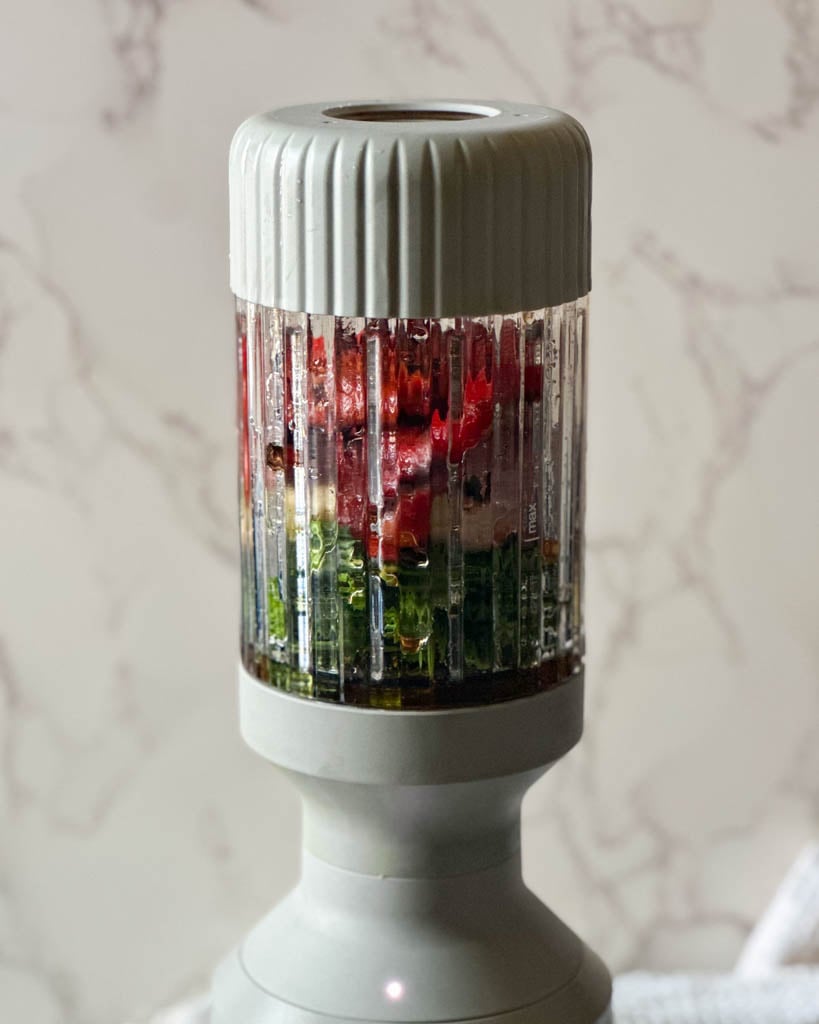
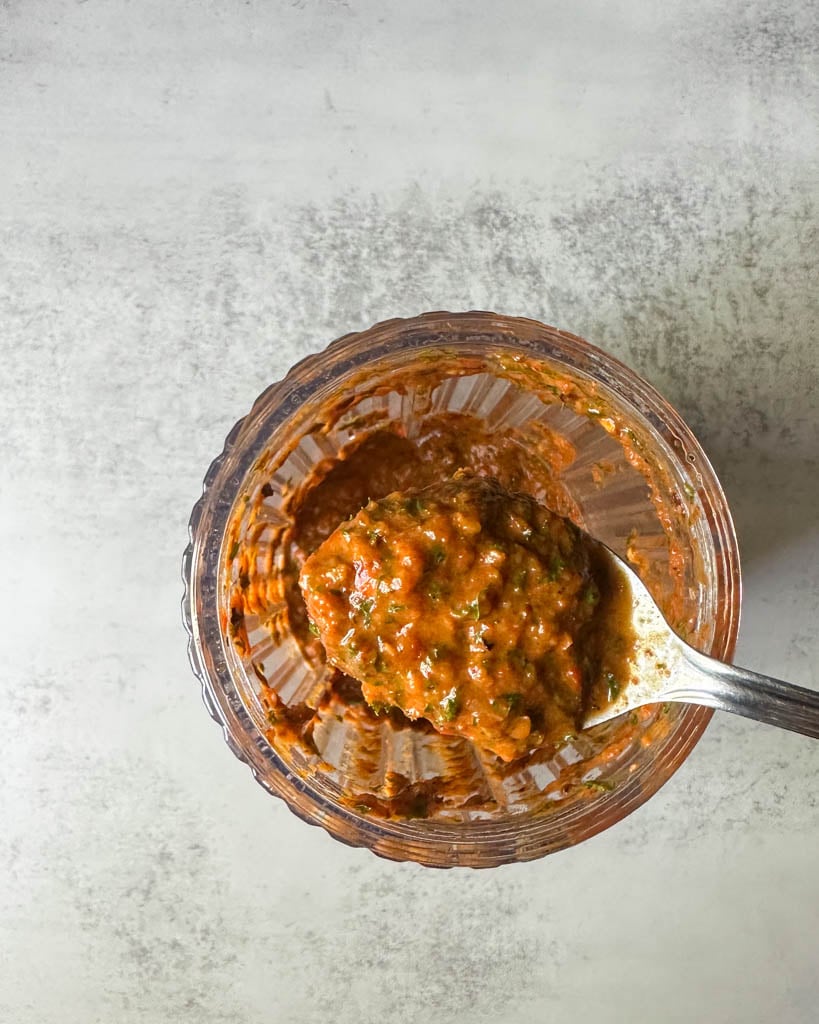
What To Serve With Your Bison Steak
- Keep it simple. Pour the remaining garlic butter sauce on your steak and serve it with a simple salad or Caesar. Mashed potatoes or truffle mashed potatoes are a great option if you want to fancy it up!
- Add a sauce on top. Serve your steak with green or red chimichurri sauce. I like to make a fresh red chimichurri sauce before cooking my steak –it’s delish!
- Make grilled sides. If you are grilling your steak, pair it with other grilled sides like grilled eggplant, or serve it surf and turf with these pineapple shrimp skewers.
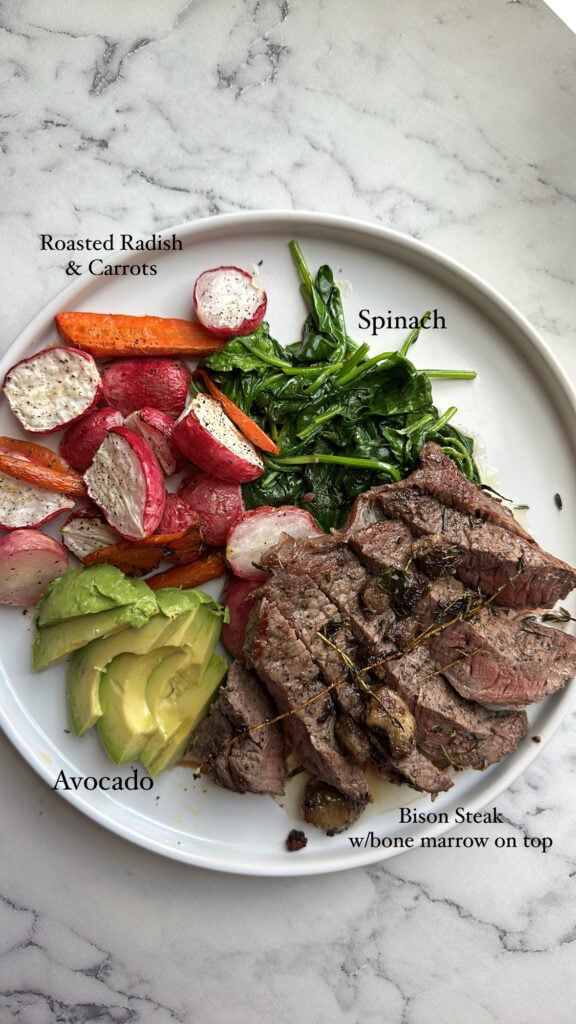
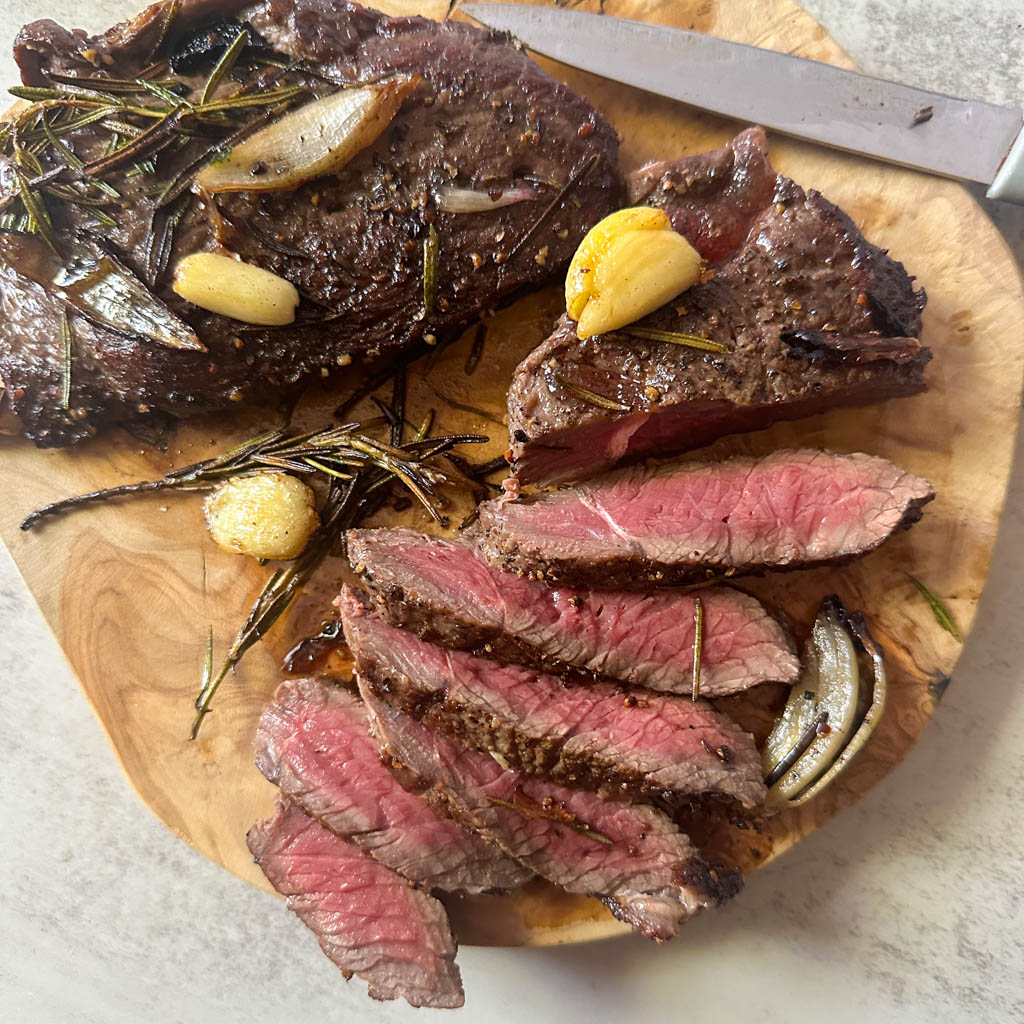
Pan-Seared Bison Steak Recipe
Ingredients
- 2 Bison Steaks (Ribeye or sirloin, preferably at least 1" thick)
- Sea Salt and Pepper, as desired (season generously)
- 2 tablespoons Avocado Oil (or preferred cooking oil)
- 3 tablespoons Butter, more or less as desired
- 5 Garlic cloves, lightly smashed
- 3 Sprigs of Fresh Rosemary
Instructions
- Season your steak generously with salt and pepper on both sides. Do this at least 1 hour before cooking as you let the steak come to room temperature. For the best results, I recommend salting your bison steak up to three days prior and store your steak in an airtight container in the fridge. The salt helps tenderize the meat and enhances the flavor. (Before cooking the steaks, let them come to room temperature for at least an hour.)
- Heat oil in a cast iron skillet or heavy-bottomed pan over high heat. Place the steak in the pan and sear for 2-4 minutes on each side, depending on size and thickness. Halfway through, add butter, garlic cloves, and fresh herbs. Baste the steak with the garlic herb butter before flipping.
- Flip the steak using tongs and sear for another 2 minutes, or until it reaches your desired doneness. Continue basting with the garlic butter as it cooks.*For a 1-inch thick steak, cook for approximately 3 minutes on the first side and 2 minutes on the second side for medium rare. *For thicker cuts, extend cooking time by 1 minute per half inch per side for a medium-rare doneness.
- Use an instant thermometer to check the temperature. Cook to 120°F (49°C) for medium rare, or 125°F (52°C) for medium.
- Remove the steak from the pan and let it rest for 8-10 minutes before slicing. Enjoy your delicious bison steak!
Video

Notes
Want To Grill Your Bison Steak?
Melt the butter with garlic and herbs in a small saucepan first and use it to baste your steak while cooking. Follow the same cooking instructions.What temperature do you cook bison steaks to?
Internal Temperature Before Resting:-
- Rare: 115°F (46°C)
-
- Medium-Rare: 120°F (49°C)
-
- Medium: 125°F (52°C)
-
- Medium Well: 135 to 145°F (57°C to 63°C)


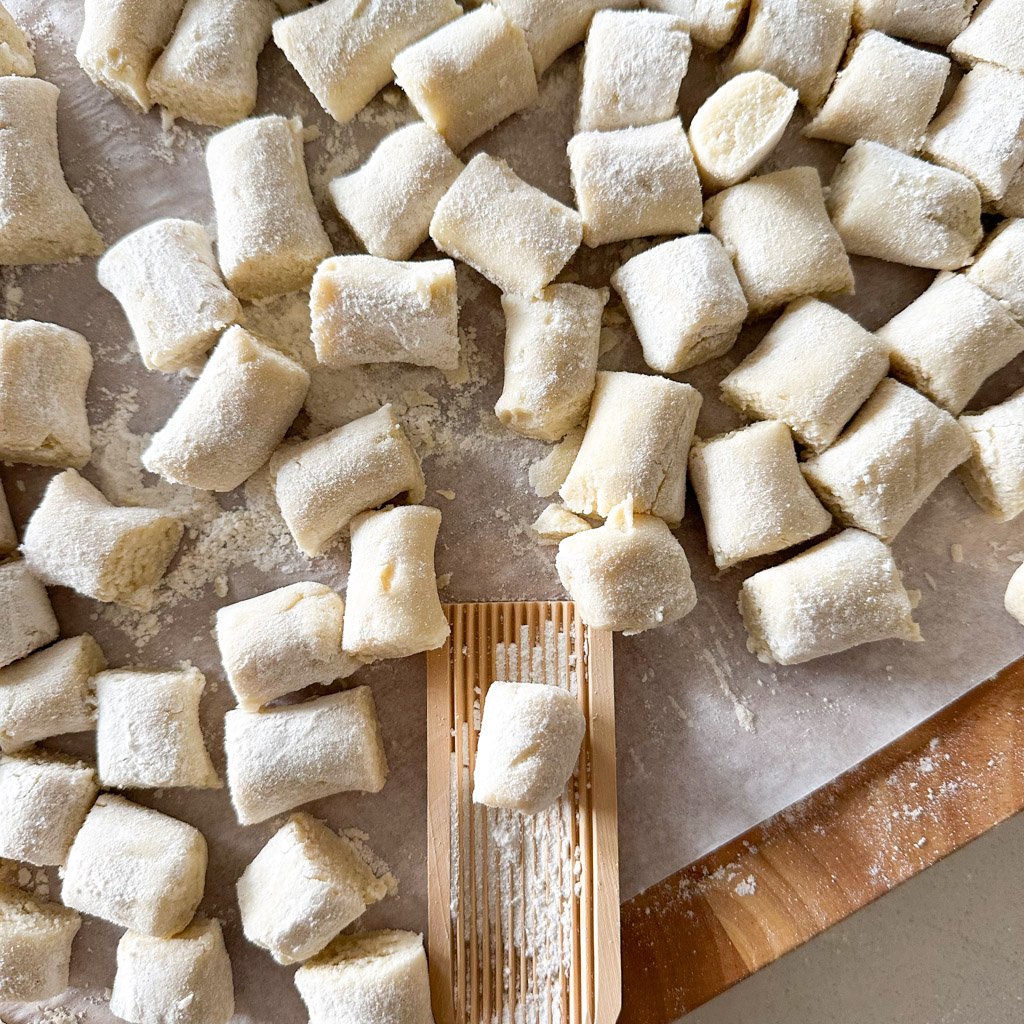

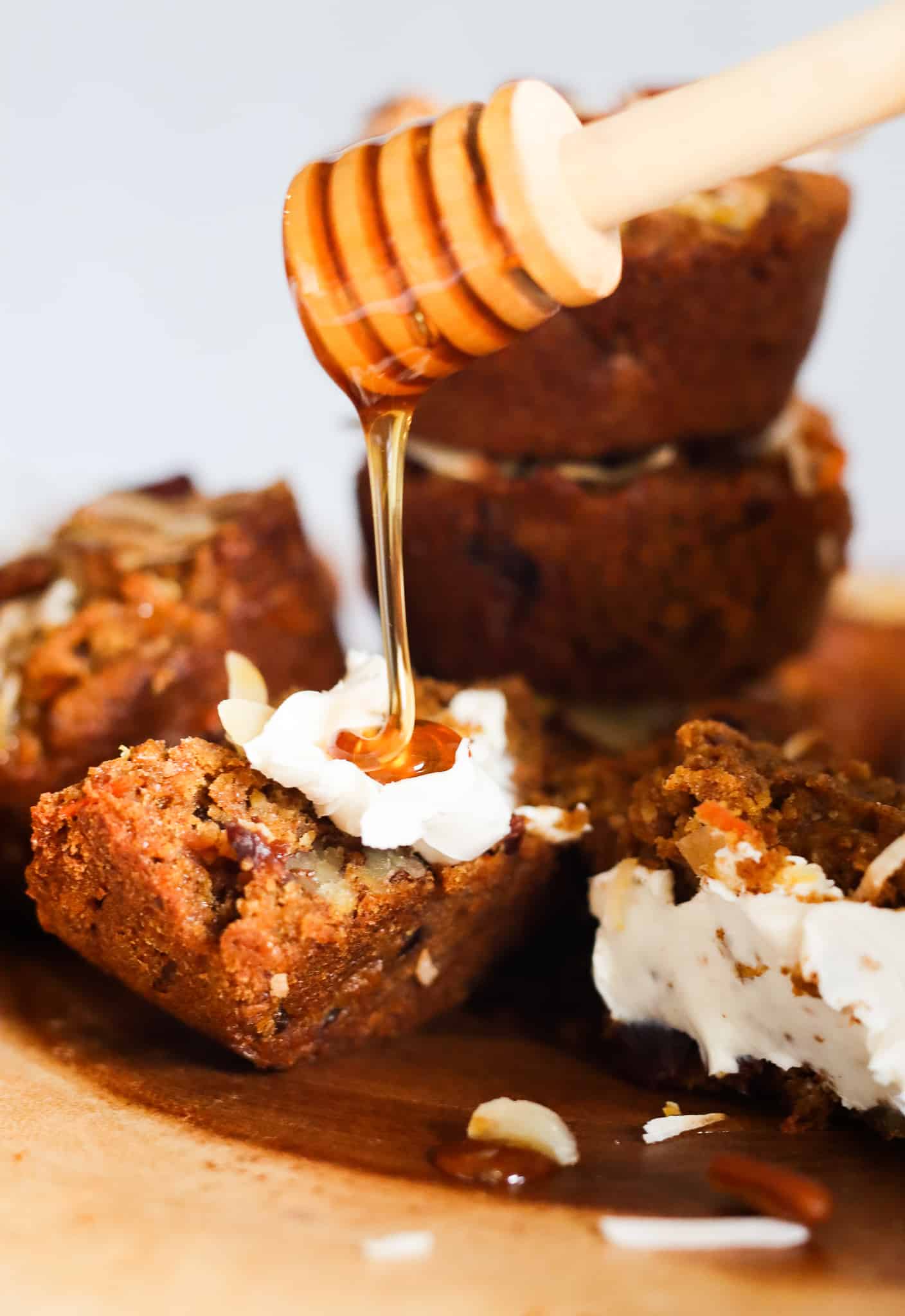
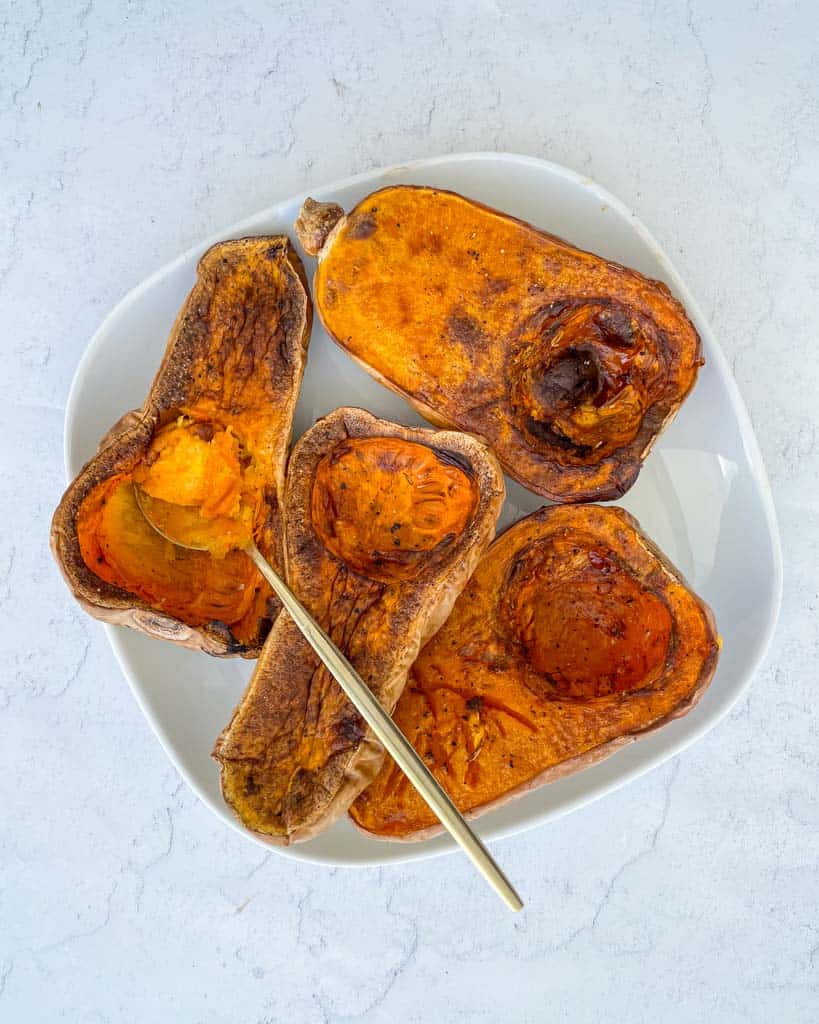
Perfect taste, tenderness and clear instruction. Thank you for sharing this recipe.
Hi,
Living in The Netherlands I have literally no experience with bison meat, so when consulting the www for help I came across this recipe. I followed the instructions exactly and the steaks turned out amazing. I seared each side for 4 minutes, and then letting them rest. They were medium rare and melt in your mouth. Taste wise bison is indeed nothing like beef. Can’t thank you enough for this recipe. 👏 Would have been lost without and had for sure overcooked.
Hi! I am so happy you found my tips and recipe helpful!! Thank you for leaving a review! 🙂
Great recepe 👍🏽 my Bison steak turned off to be the best steak I ever made. Perfect!!!
That makes me so happy! Thank you for leaving a review 🙂
Absolutely amazing steak recipe! I also used a steak seasoning & it charred a bit/blackened from the high heat but it was still perfect & crunchy! I also only marinated an hour before frying but I got two super tender & thin steaks. Thanks for this recipe! So easy & tasty!
Sounds so good! I am glad you liked the recipe! 🙂
Stellar recipe! My steak was tender and had good flavor
SO GOOD! My first time making bison steak and it turned out great. Thanks for all the tips
I really like this recipe. The tips were super helpful. I bought a bison ribeye and cooked it to medium and it taste perfect! Thanks for sharing these helpful tips
You’re welcome Russell! I am happy to hear you found the tips helpful 🙂